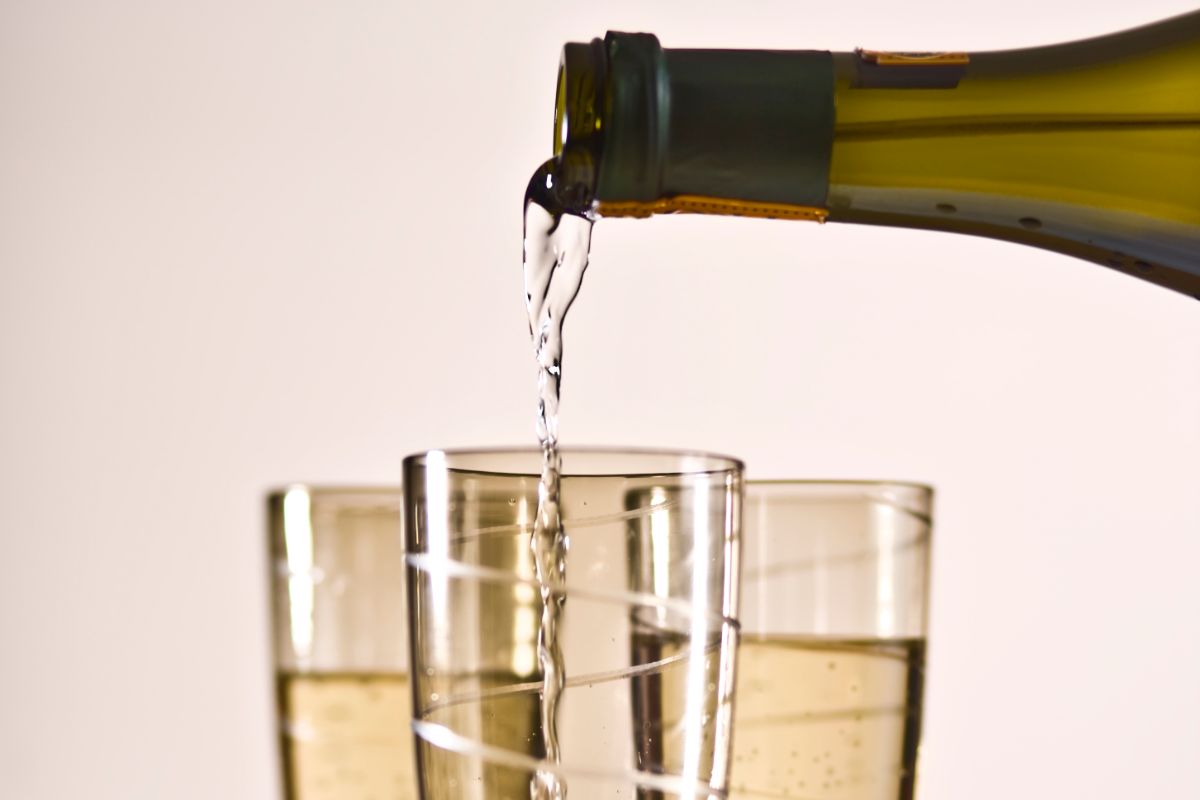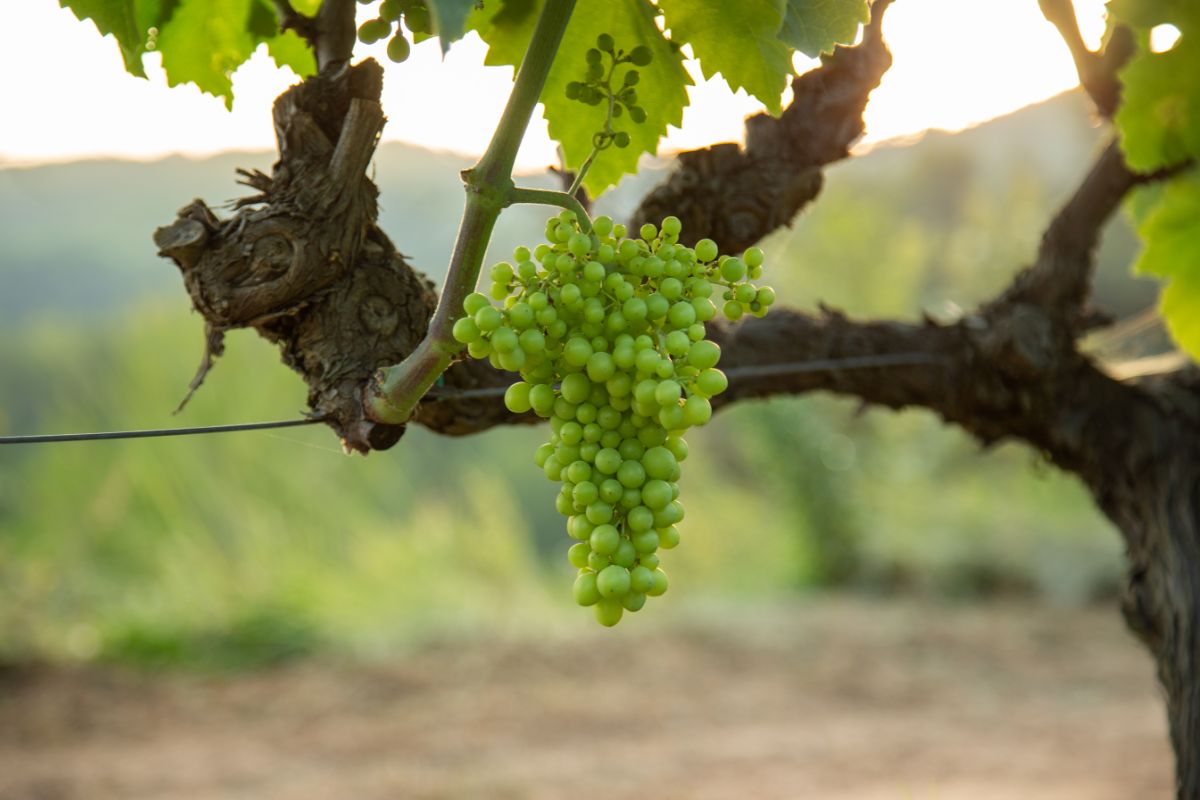Champagne and other sparkling wines are usually saved for special occasions, but there may be times when you want to enjoy sparkling wine without it being a celebration.

If you’ve ever looked for a Champagne substitute that’s under twenty dollars, odds are that it will be Prosecco or Cava. In the case of Cava, this is a tasty, affordable sparkling wine that you can enjoy whenever you want.
You’ll discover more about Cava in this post, including what it is, where it comes from, and how it tastes. We’ll also cover how best to enjoy Cava, as well as the difference between Cava, Champagne, and Prosecco (Also check out Moscato VS Prosecco: What Do You Buy?).
Cava: The Basics
Cava is a type of sparkling wine that hails from Spain. This popular wine is named after the Spanish term for ‘cave’, which relates to wine cellars in which they age.
Cava was originally called champaña, but in the 1970s, Spanish winemakers started to call their product cava to avoid anger from French Champagne producers. To be called Cava, the wine needs to follow specific rules.
Most notably is that is it needs to originate from the Cava Denominaciòn de Origen. Cava also needs to be carbonated with a second in-bottle fermentation. Here are some of Cava’s main features:
- Cava can be either rosé/rosado or white.
- The wine can be bone dry or quite sweet, depending on how it’s made. In most cases, however, Cava tends to be brut, meaning dry.
- Cava is created with traditional processes which give it fine bubbles, like Champagne.
- Cava tends to be non-vintage, meaning that it’s a mixture of wines from various vintages.
Why Is Cava Affordable?
Cava’s affordable price range is related to grapes that form in Penedes and Catalonia areas. These grapes cost less to grow and cultivate, particularly compared to grapes used to make French champagne.
How Does Cava Taste?
Cava may taste different depending on how much sugar was added during bottling. With this in mind, most Cava bottles are brut, which means dry. In this case, Cava is a sparkling wine beverage with zesty, dry notes.
You’ll notice a slightly nutty taste that goes well with its’ fruity flavors, including peach, pear, orange, and apple. Cava usually has a lot of acidity and a light body. The alcohol content ranges from low to medium, while its finish is often pleasantly bitter.
If the Cava has been aged for longer, like Reserva or Gran Reserva bottles, the maturing process can give the wine toast, almond, and occasionally smoky notes.
Where Is Cava Produced?
Most Cava bottles are made in Catalonia’s Penedès wine location. This is found around Barcelona in the northeastern part of Spain. The Cava DO area consists of several areas.
95% of the wine originates from Penedès, but there are places in València, La Rioja, and Aragón, that are permitted to create Cava wine. The greatest amount of Cava production is focused around Sant Sadurní d’Anoia.
José Raventós first created Cava in this down during 1872. The inspiration for this came after a visit to France. After the trip, Raventós brought Champagne-esque winemaking techniques to Spain.
Raventós’ winery, Codornìu, is one of the largest Cava producers today, along with Juvé y Camps and Freixenet.
Different Cava Grapes

Cava is available in several varieties, but it’s generally made from a mixture of grapes. Each type of grape gives the wine a different element. Classic Cava grapes are:
- Macabeu: Also known as viura or Macabeo, Macabeu grapes thrive in a Spanish climate. The grapes have a neutral flavor, resist oxidation well, and help give the wine a noticeable body.
- Parellada: These grapes have citrus and green apple notes.
- Xarel.lo: These grapes have an earthy flavor and lime blossom fragrances. They help give the wine acidity.
Some also add subirat, a term for malvasia, to add fragrance to their wine. French grapes, like ones used for chardonnay and pinot noir, aren’t classic options, but are permitted for use in Cava DO wines. Rosado Cava bottles are made with red grapes, like monastrell, garnacha, or trepat.
How Cava Is Made?
Cava is made with traditional methods. In the French Champagne region, these techniques are known as méthode champenoise, as they come from the area. These methods involve mixing sugar and yeast with a neutral base wine, all inside a bottle.
Next, another fermentation happens to trap carbon dioxide in the beverage, giving it characteristic bubbles. Yeast is added to speed up the fermentation. This drops to the base of the bottle, turning into sediment which gives the wine hearty notes as it matures.
Cava needs to age in their bottles for a minimum of nine months. Cava Reserva needs longer, 15 months, while Cava Gran Reserva needs to age for 30 months, at least.
Types Of Cava
Cava is characterized by how much sweetness the wine takes on during bottling. This is labeled in grams per liter of sugar. Though most Cava is dry (brut) or extra dry (extra brut), you can find sweeter bottles available.
- 0 to 3 grams per liter: Brut Nature
- 0 to 6 grams per liter: Extra Brut
- 0 to 12 grams per liter: Brut
- 12 to 17 grams per liter: Extra Dry (Extra Seco)
- 17 to 32 grams per liter: Dry (Seco)
- 32 to 50 grams per liter: Semi-Dry (Semi Seco)
- > 50 grams per liter: Sweet (Dulce/Dolç)
Best Way To Drink Cava
Cava should always be enjoyed cold, so it needs to be chilled before opening. As Cava is a sparkling wine, its best flavors and characteristics will be noticeable when it’s at a lower temperature.
As is often seen with Champagne, Cava is often served in an ice bucket. This allows you to add more ice to your glass to keep it cold. As Cava is so affordable, you don’t need to save it for occasions.
You can enjoy a glass on a warm afternoon, to end a long day at work, or on vacation while enjoying a seaside view.
What Makes Cava, Champagne, And Prosecco Different?
Cava is more similar to Champagne compared to Moscato or Prosecco, as these sparkling wines aren’t made with traditional practices. The difference between Cava and Champagne is related to the grapes used to make them.
Champagne can only be made from seven permitted grapes. Common examples include pinot meunier, pinot noir, and chardonnay.
Cava can be made from chardonnay and pinot noir grapes, but generally speaking, Cava is made from a mix of macabeu, parellada, and xarel.lo. This creates a beverage that’s earthier and fruitier compared to Champagne.
Prosecco is like Cava when it comes to price, but this is the only similarity. Prosecco is an Italian wine that involves glera grapes. It’s also produced with the tank technique, also known as the Charmat procedure.
This creates a fruity, fresh wine that doesn’t have the intricate, toasty notes seen in Cava. Prosecco also has less carbonation and more sugar compared to most Cava bottles.
Final Thoughts
Now you know more about Cava wine! This Spanish sparkling wine is loved for its crisp taste, pleasant aromas, and general affordability.
Whether you’re enjoying a glass to celebrate an occasion or just as a pick-me-up on a summer day, Cava is a tasty wine that goes well with many occasions.
- Why Does Wine Taste Better With Age? - June 14, 2023
- What Does It Mean When A Bottle Of Wine Is Corked? - June 14, 2023
- Wine Fridge Vs Wine Cellar – Which One Should You Choose? - June 14, 2023
